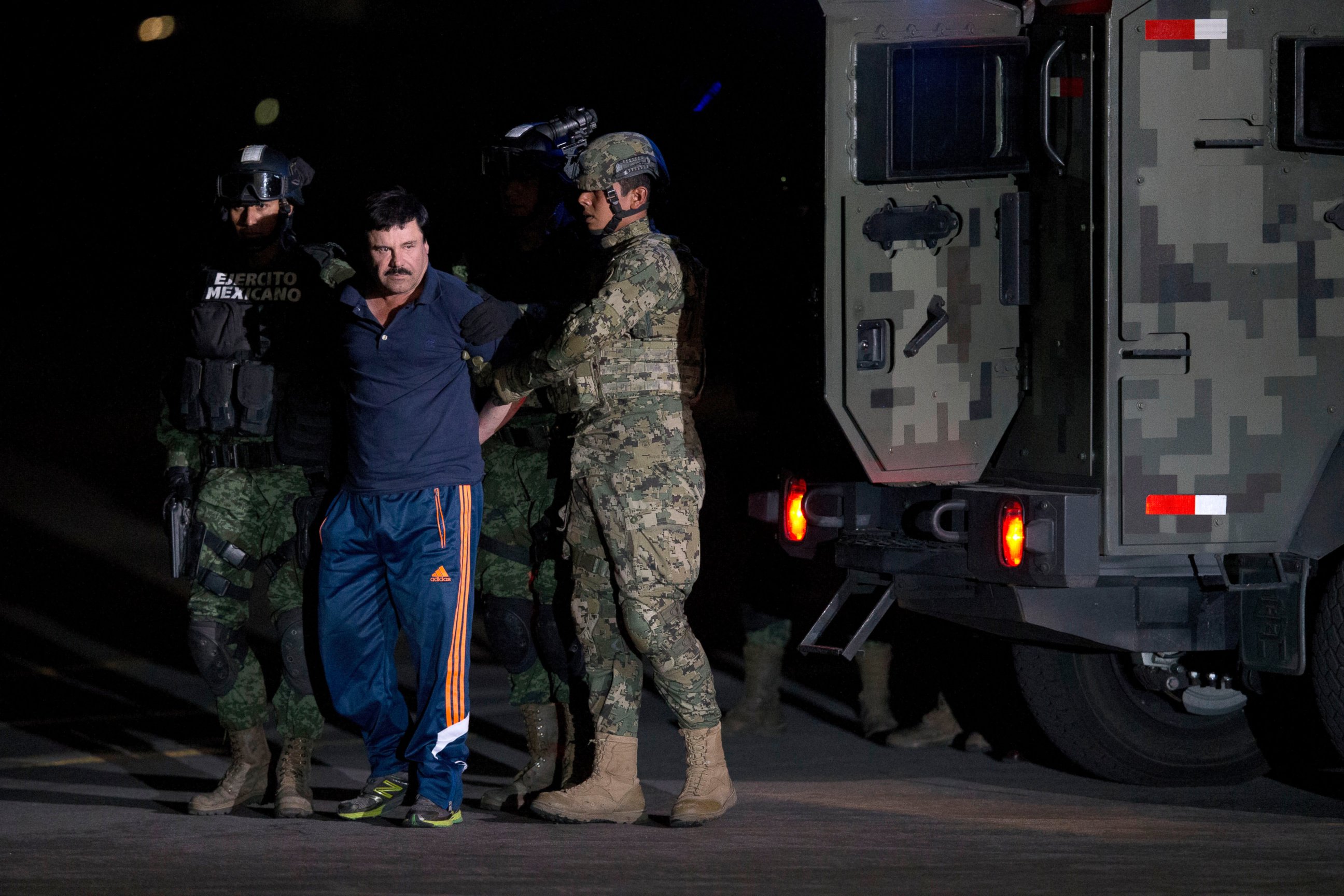Inside the Dramatic Raid That Took Down 'El Chapo'
Joaquin "El Chapo" Guzma was captured Friday after months on the run.
— -- Incredible GoPro footage takes you inside the gunfire-heavy raid that ended drug lord Joaquin "El Chapo" Guzman's six months on the run.
The video, obtained from Mexican authorities, looks as if it's from an action movie. The camera follows the armed men as they storm the house, unleash grenades and bullets, and search room to room.
The Friday raid was called "Operation Black Swan," according to the Mexican show "Primero Noticias." Authorities decided to launch the raid Thursday after they got a tip about where Guzman was sleeping, the show reported.
Seventeen elite unit Mexican Marines launched their assault on the house in the city of Los Mochis at 4:40 a.m., "Primero Noticias" said.
They were met by about one dozen well-armed guards inside who were prepared for a fight, the show said.
The Marines moved from room to room, clearing the house. Upstairs they found two men in one room and found two women on the floor of a bathroom. All were captured, "Primero Noticias" said.
After 15 minutes, the Marines controlled the entire house, according to "Primero Noticias."
In the end, five guards were killed and two men and two women were detained. One of the women was the same cook Guzman had with him when he was detained a couple years ago, according to "Primero Noticias."
Eventually the marines determined that the only bedroom on the first floor was Guzman's and they began pounding on the walls and moving furniture, finding hidden doors, the show said.
His room had a king-sized bed, bags from fashionable clothing stores, bread and cookie wrappers, and medicine including injectable testosterone, syringes, antibiotics and cough syrups, the show said. The two-story house had four bedrooms and five bathrooms. There were flat-screen TVs and Internet connection throughout the house, according to "Primero Noticias."
The Marines eventually found a hidden passageway behind a mirror, with a handle hidden in the light fixture. The handle opened a secret door, leading down into the escape tunnel, the show explained.
The escape tunnel was fully lit and led to an access door for the city sewage system, "Primero Noticias" said, adding that Guzman had at least a 20-minute head start on the Marines.
The address where Guzman was captured had been monitored for a month, Mexican Attorney General Arely Gomez has said. According to Gomez, Guzman and his lieutenant escaped through that drainage system.
"Primero Noticias" said it obtained surveillance footage showing Guzman and his lieutenant emerging from the manhole cover, where they then stole two cars to flee, the show said.
Guzman was finally caught when he and the lieutenant were stopped on a highway by Mexican Federal Police, the show said.
Authorities took them to a motel to wait for reinforcement. The men were then taken to Los Mochis airport and transfered to Mexico City.

Guzman is now back in prison as his lawyers fight his extradition to the U.S.
The drug kingpin escaped from the Altiplano prison near Mexico City on July 11, launching an active manhunt. When guards realized that he was missing from his cell, they found a ventilated tunnel and exit had been constructed in the bathtub inside Guzman's cell. The tunnel extended for about a mile underground and featured an adapted motorcycle on rails that officials believe was used to transport the tools used to create the tunnel, Monte Alejandro Rubido, the head of the Mexican national security commission, said in July.
Guzman had been sent there after he was arrested in February 2014. He spent more than 10 years on the run after escaping from a different prison in 2001. It's unclear exactly how he had escaped, but he did receive help from prison guards who were prosecuted and convicted.
Guzman, the leader of the Sinaloa cartel, was once described by the U.S. Treasury as "the most powerful drug trafficker in the world." The Sinaloa cartel allegedly uses elaborate tunnels for drug trafficking and has been estimated to be responsible for 25 percent of all illegal drugs that enter the U.S. through Mexico.




